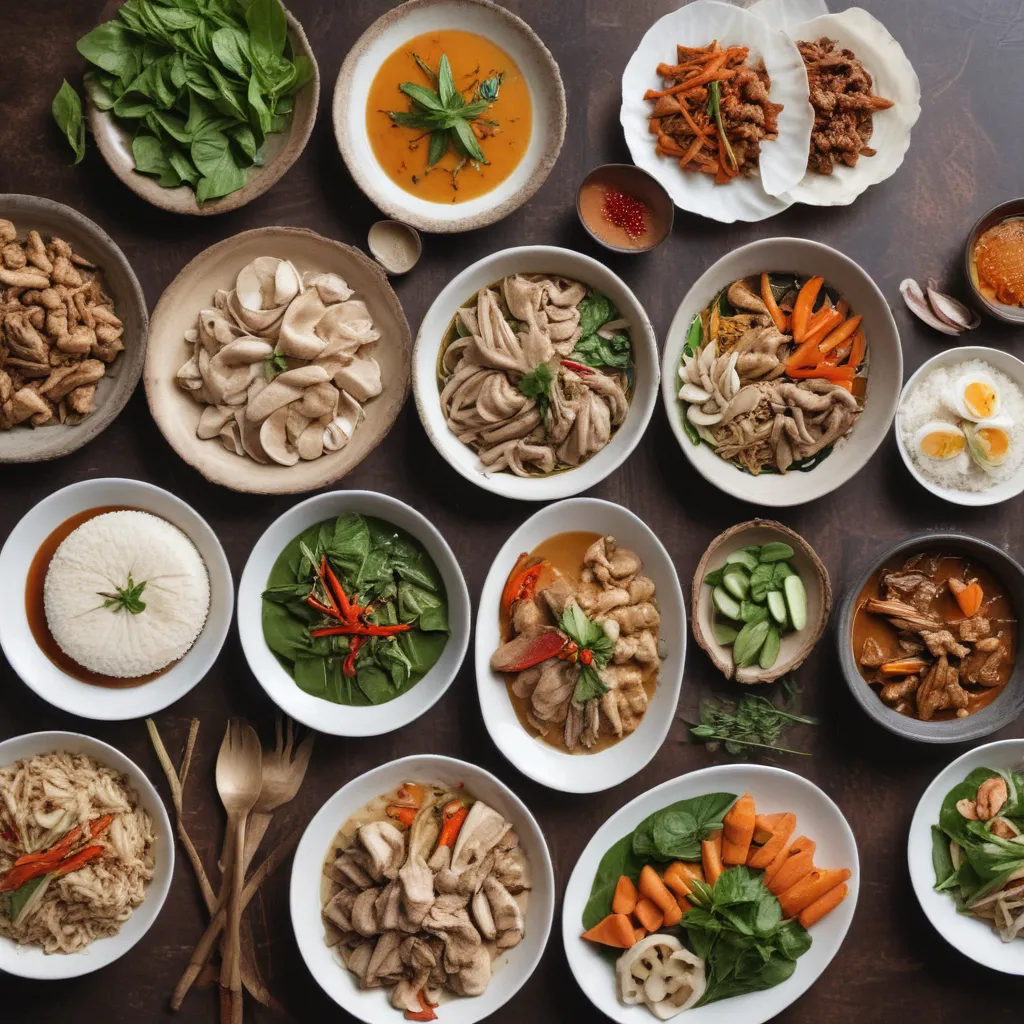
Discovering the Art of Harmony at Camperdown Elm
As I step through the doors of Camperdown Elm, the air is thick with the tantalizing aromas of sizzling spices and fragrant herbs. This Brooklyn-based restaurant has long been a beacon for those seeking an authentic and elevated Thai dining experience. But today, I’m not just here to savor the flavors – I’m on a mission to uncover the delicate balance that lies at the heart of Thai cuisine.
Nestled in the vibrant neighborhood of Prospect Heights, Camperdown Elm exudes a sense of tranquility that instantly puts me at ease. The understated elegance of the decor, with its natural wood tones and minimalist accents, reflects the restaurant’s ethos of finding harmony in simplicity. As I settle into my seat, I can’t help but wonder: what is it about Thai food that has captivated so many palates around the world?
The Pursuit of Equilibrium
The essence of Thai cuisine, I soon discover, lies in its pursuit of equilibrium. It’s a culinary art form that seeks to achieve a perfect balance of flavors – a delicate dance between the salty, the sweet, the sour, and the spicy. “In Thai cooking, we strive to create a harmonious interplay of these opposing elements,” explains Noom, the head chef at Camperdown Elm. “It’s not about one flavor overpowering the others, but rather finding a way for them to complement and enhance each other.”
This principle of balance is evident in the restaurant’s signature dishes, from the fragrant Tom Yum Goong soup to the fiery Pad Krapow Moo. Each bite is a revelation, a symphony of tastes that explode on the tongue, only to be tempered by the soothing creaminess of coconut milk or the refreshing tang of lime.
The Art of Seasoning
Achieving this delicate balance, however, is no easy feat. It requires a deep understanding of the interplay of ingredients and a masterful hand in seasoning. “Thai cooking is all about precision,” Noom tells me, as he guides me through the preparation of a classic Massaman Curry. “You have to be mindful of every element, from the exact amount of fish sauce to the perfect degree of spiciness.”
As I watch Noom effortlessly blend the spices, sauces, and aromatics, I’m struck by the level of attention and care he dedicates to each step. It’s a dance of sorts, a carefully choreographed routine that requires both technical skill and intuition. “The key is to taste as you go, constantly adjusting the flavors until they’re in perfect harmony,” he explains, his brow furrowed in concentration.
The Role of Texture
But balance in Thai cuisine is not just about the flavors – it’s also about the interplay of textures. “Thai food is all about contrasts,” Noom says, as he presents me with a plate of Larb Moo, a spicy minced pork salad. “You have the crunch of the toasted sticky rice, the coolness of the herbs, and the tenderness of the meat – it’s a symphony of sensations.”
This attention to texture is evident throughout the menu, from the silky smooth Khao Niaow Ma Muang (mango sticky rice) to the delightfully crispy Goong Ob Woon Sen (glass noodles with shrimp). Each dish is a carefully curated experience, designed to engage all of the senses and leave a lasting impression on the palate.
The Transformative Power of Fermentation
As I delve deeper into the world of Thai cuisine, I’m struck by the pivotal role that fermentation plays in shaping its distinctive flavors. “Fermentation is the foundation of Thai cooking,” Noom explains, as he introduces me to the pungent yet irresistible flavors of Pla Ra, a traditional fermented fish sauce.
This ancient preservation technique not only adds depth and complexity to the dishes but also unlocks a hidden dimension of umami. “When you ferment ingredients like fish, shrimp, or soy, you’re creating a flavor profile that is both familiar and utterly unique,” Noom says, his eyes alight with enthusiasm.
At Camperdown Elm, the embrace of fermentation is evident in the restaurant’s housemade sauces and condiments, each one a testament to the transformative power of time and patience. “It’s all about allowing the flavors to develop and meld together,” Noom says, as he shares a bite of the restaurant’s signature Nam Prik Noom, a smoky and tangy chili paste that’s been meticulously fermented for weeks.
The Importance of Balance
As I savor the complex and delightful flavors of the dishes at Camperdown Elm, I can’t help but reflect on the underlying theme that ties them all together: balance. It’s a concept that permeates every aspect of Thai cuisine, from the harmonious interplay of ingredients to the thoughtful presentation of each dish.
“Thai food is all about finding the perfect equilibrium,” Noom explains, as we sit down to enjoy a family-style meal. “It’s not just about the flavors, but also the textures, the temperatures, and the overall experience. It’s about creating a sense of balance and harmony that leaves a lasting impression on the diner.”
And as I take my first bite of the Massaman Curry, the flavors exploding on my tongue with a perfectly balanced symphony of spices, I realize that this pursuit of balance is not just a culinary technique – it’s a way of life. It’s a reminder that in a world that often seeks to overwhelm us with extremes, true satisfaction can be found in the delicate interplay of opposites.
So, if you’re ever in Brooklyn and craving an authentic and elevated Thai dining experience, be sure to visit Camperdown Elm. It’s a restaurant that doesn’t just serve delicious food – it offers a masterclass in the art of balance, a lesson in the transformative power of harmony.
